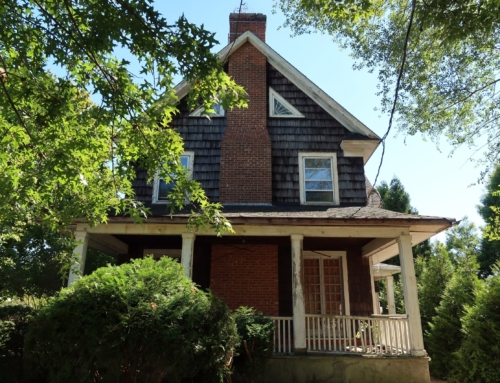The following is an excerpt from Ilyce Glink’s newest book, 50 Simple Steps You Can Take To Sell Your Home Faster and For More Money in Any Market, which was just released this week.
Before you put your house on the market, it pays to do a little research. So check out the competition. It’s easy to do – simply start by visiting open houses in your neighborhood.
Why do you want to find out about the other homes on the market? It’s important to develop a mental inventory of what’s been sold, and what is currently available for sale. You’re looking to see what condition the homes are in, what amenities they have, and how much the owners are asking. Then, you should to compare these homes to your own. Ask yourself the following questions:
Is my home bigger or smaller than this property? Size matters to home buyers. If your condo, co-op, townhome or single family house is bigger than your neighbor’s, and both you and your neighbor are asking the same amount of money for the property, your home may be perceived as a better deal because it offers more square feet for the money.
Is my home in better or worse shape? These days, condition may be the single most important reason why your house will or won’t sell. Price is important, but often a buyer will pay a little extra for a house that’s in “blue ribbon” or “move-in” condition.
After spending as much as they can to buy your home, most buyers don’t have much left to spend on improvements. So even if your house is bigger than your neighbor’s, if it’s in far worse condition, you may have a problem getting the same price.
What amenities do competitive houses have that mine doesn’t? Let’s imagine that you live in a subdivision of identical homes. But yours has fancier tile (marble instead of ceramic), stainless steel kitchen appliances (instead of white or beige), and a higher quality of carpet or even hardwood floors.
All other things being equal, you should be able to command a slightly higher price than your neighbor because of your upgrades. Remember, no two existing homes are really equal, even in a sea of “identical townhomes,” because people decorate and live differently (for better or worse) in their homes. When counting amenities, don’t just include the upgrades, but also include the numbers of rooms, bathrooms, garden and landscaping, and condition as well.
How does each house, condo, or townhouse compare with others in the neighborhood that are for sale? Collect listing sheets from all of the open houses you visit and make notes about how each house measures up in size, condition and amenities.
By comparing the size, condition and amenities of each house with the listing price and, ultimately, the sales price, you should get an excellent idea of how much homes are selling for and what the true market value of your own home is.
And, true market value is what you’re after when you’re selling your home. It’s an excellent idea to price your home just above its market value. In a seller’s market, you’ll price it a bit higher above market value; in a buyer’s market, you’ll price it a bit lower. If you’re realistic in the listing price you set, based on the size, condition and amenities your property offers, you should have many more prospective buyers walk through your doors.
When you visit other homes for sale, try to develop a body of knowledge about what the "true value" is for property at that point in time in that neighborhood. Of course, true value shifts constantly in real estate, and it’s impossible to stay 100 percent current with market values, but the idea is to have a general sense of what things cost and what people are getting for their money.
To deepen your knowledge, take a camera with you to the open houses. A camera can help you document the specific amenities you find in a house.
Print your photographs, separate them by house and clip them to the listing sheet for that property. Three-hole punch the listing sheets and insert them in a 3-ring binder (or just keep them in a manila folder you can get at easily). As the homes you’ve seen get sold, you’ll want to go back and jot down the price someone paid for the property. You can find out the sales prices by asking your agent to look them up for you, or by going to the office of the recorder of deeds in your area (you’ll likely find them at your county hall) and looking up the sales data. Many newspapers also publish recent sales prices, so check out the real estate section of your local paper for useful, but often delayed, data.
You might also want to note how long it takes to sell each home that’s listed in your neighborhood. It’s one thing if a house sells for its list price in a day. It’s quite another if a house take several months to sell, and the owner only gets 91 percent of the asking price.
How long a property stays on the market tells you a great deal about where the housing market is in your neighborhood, and what you can expect when you list your home for sale.






Leave A Comment